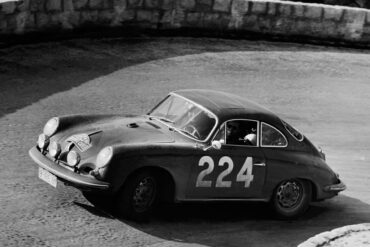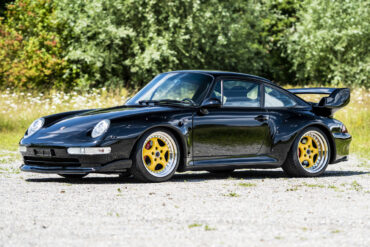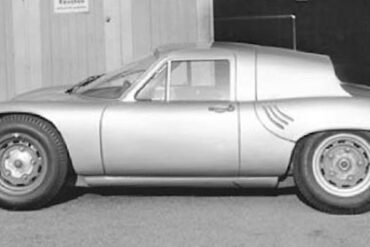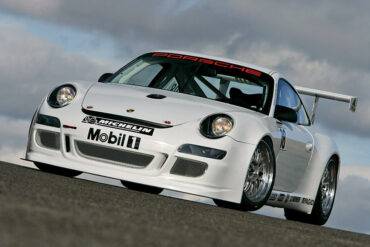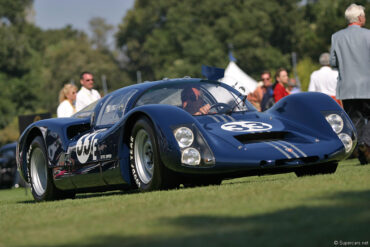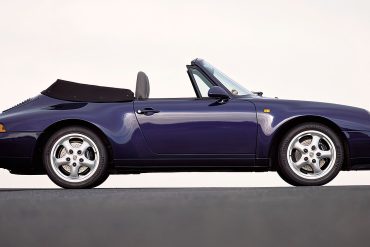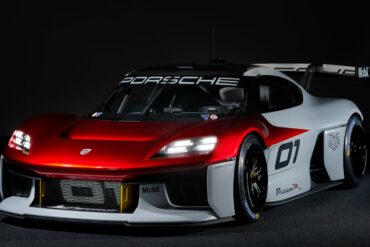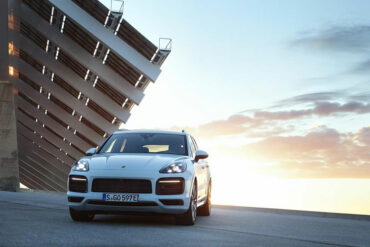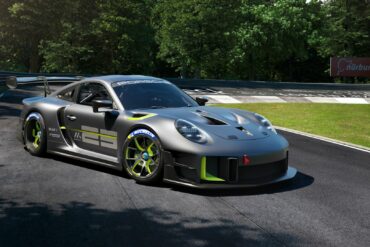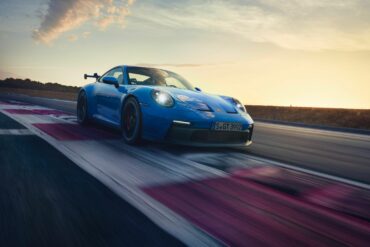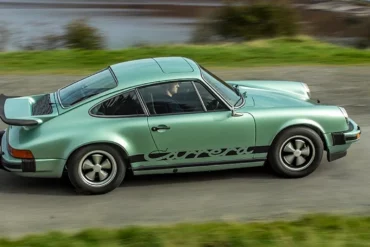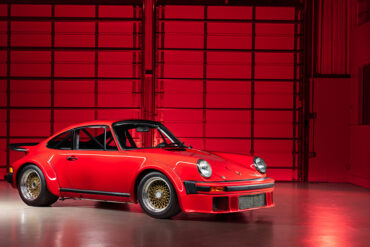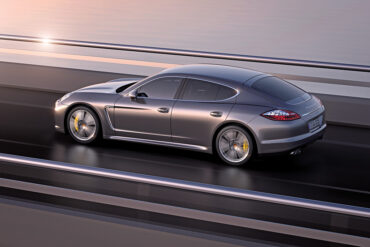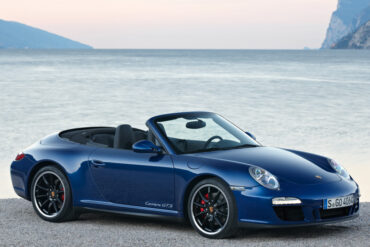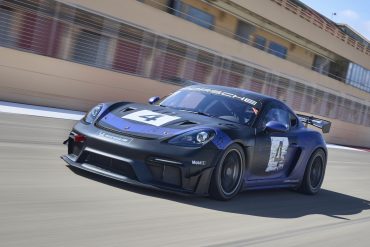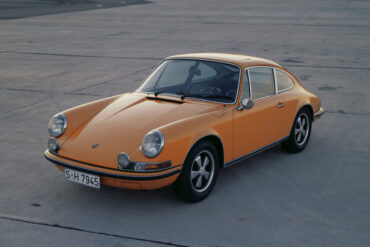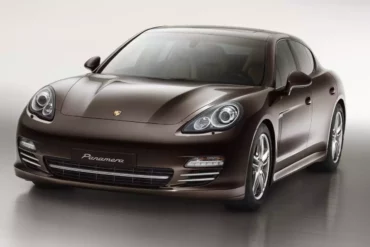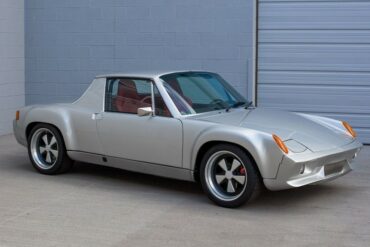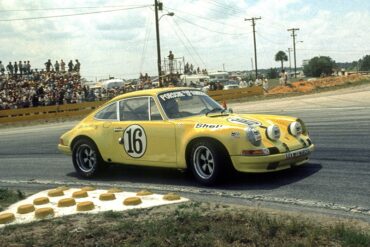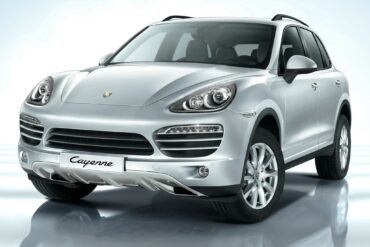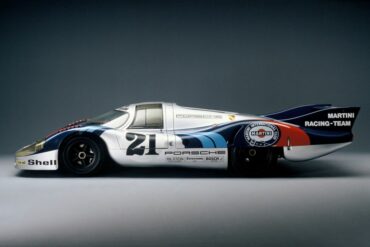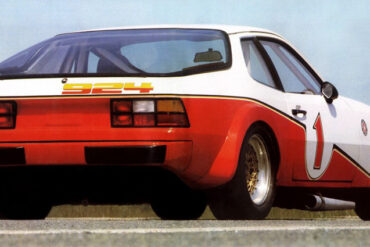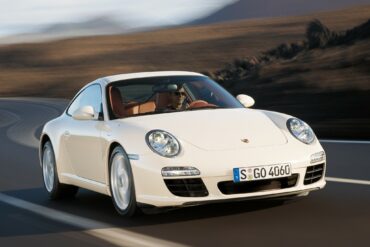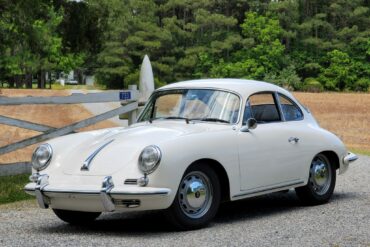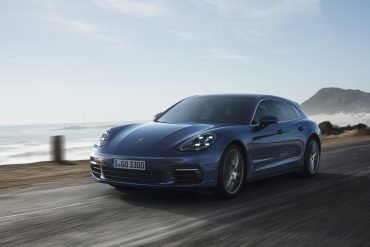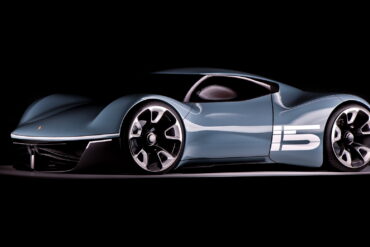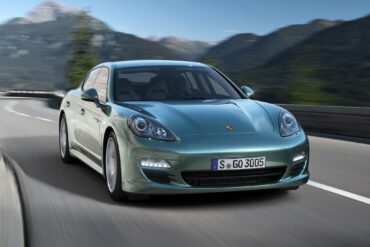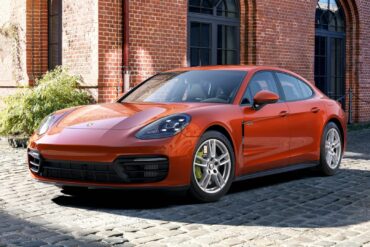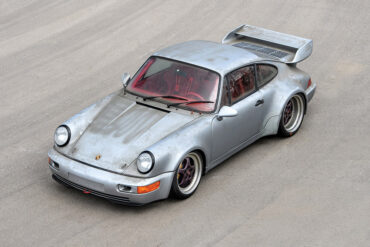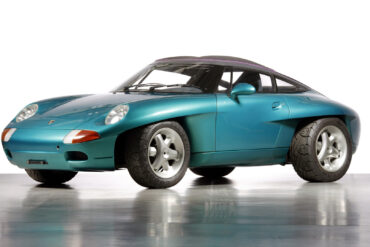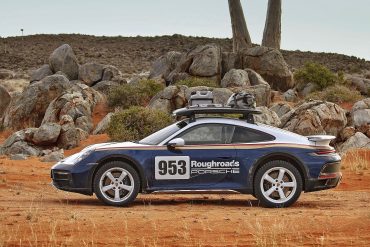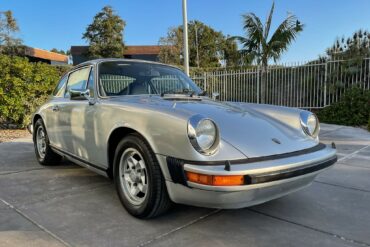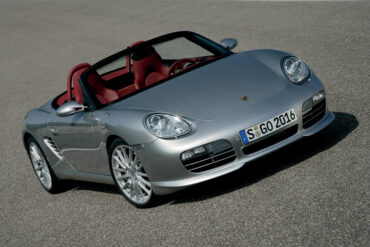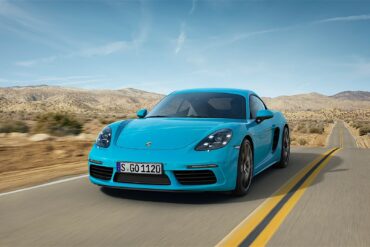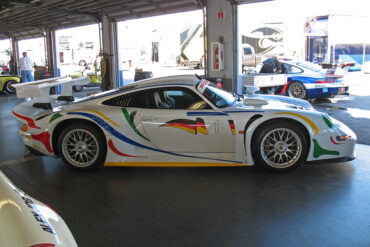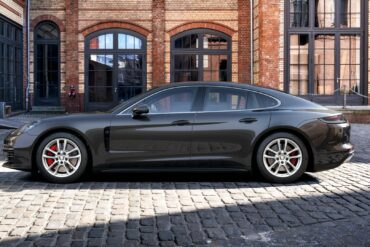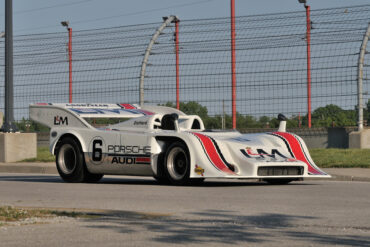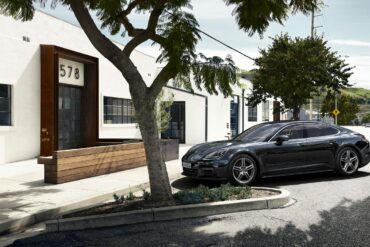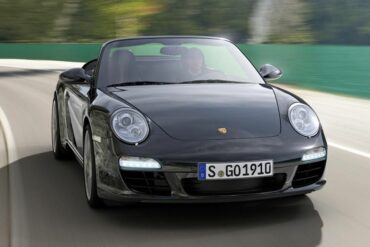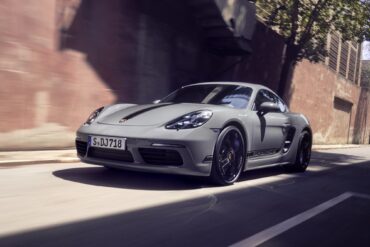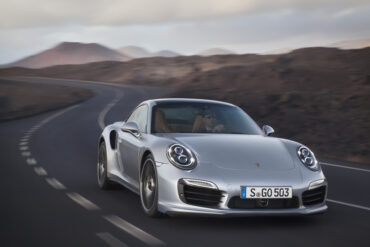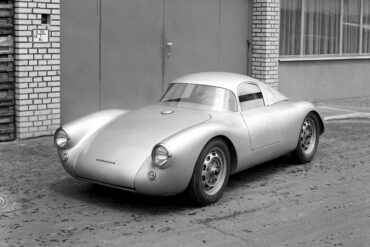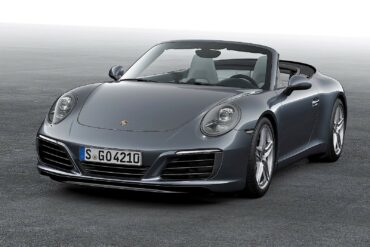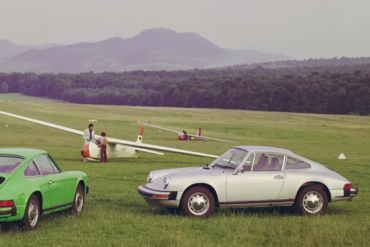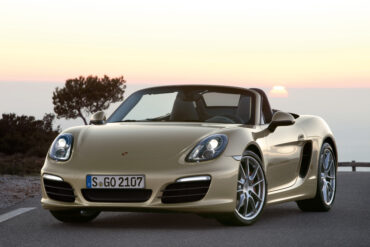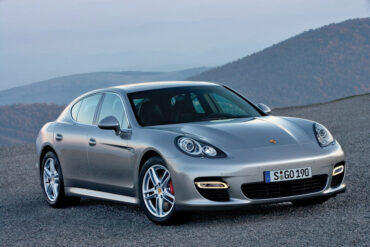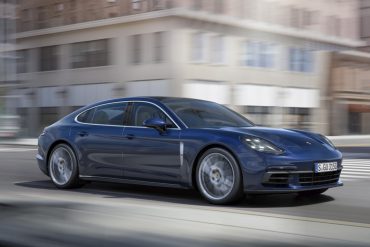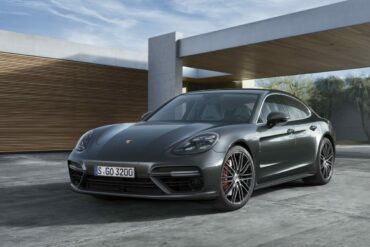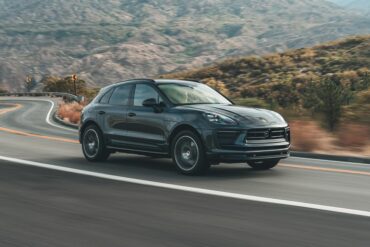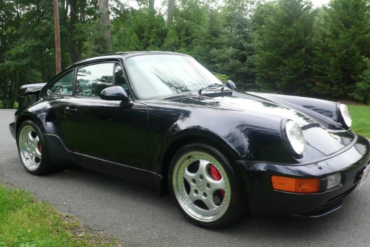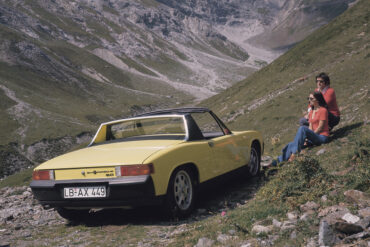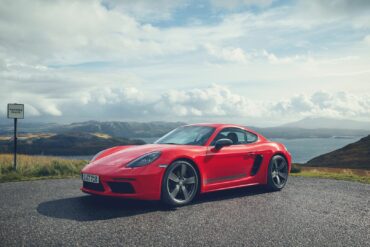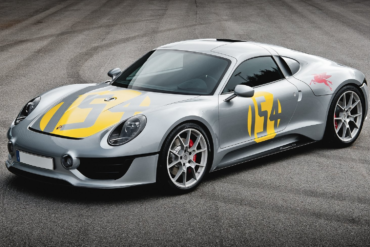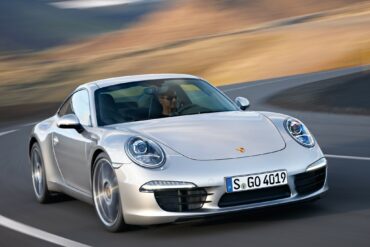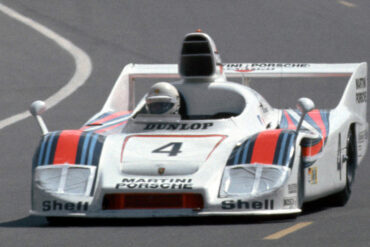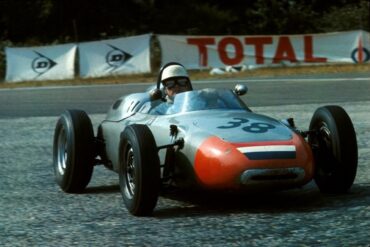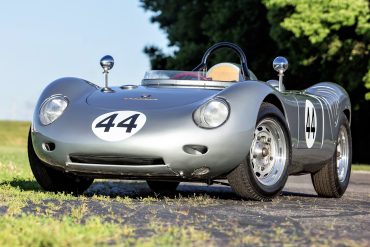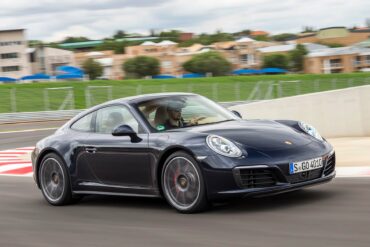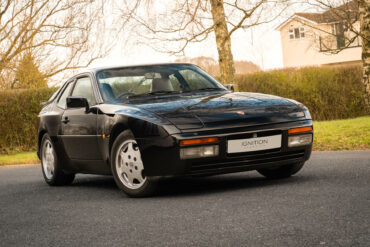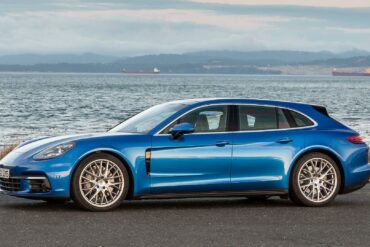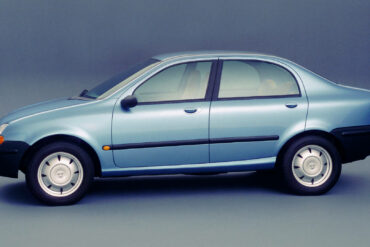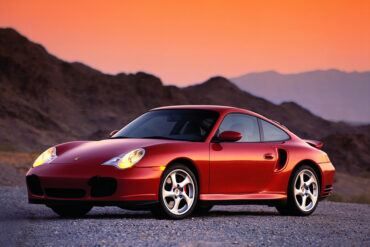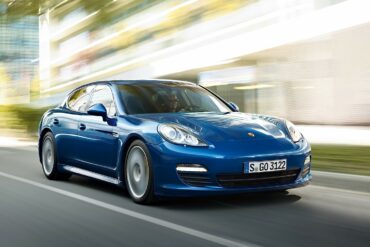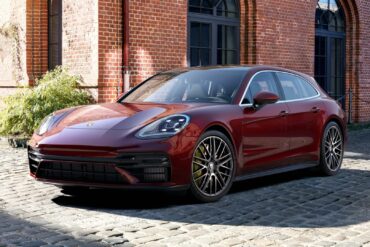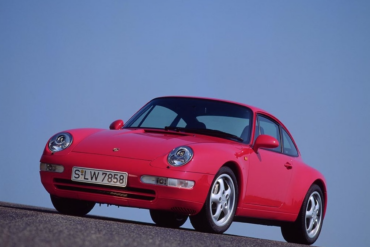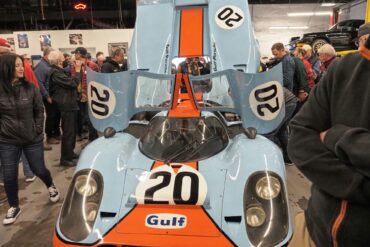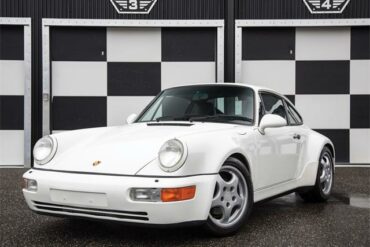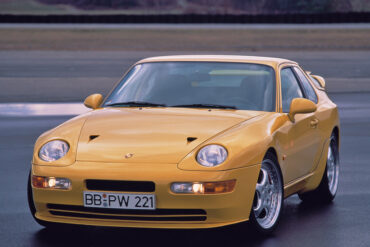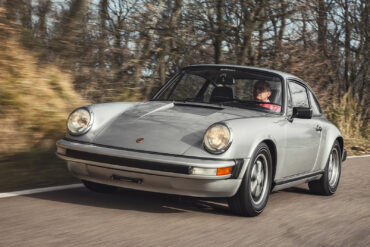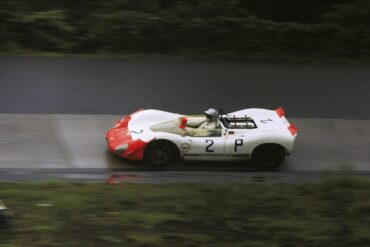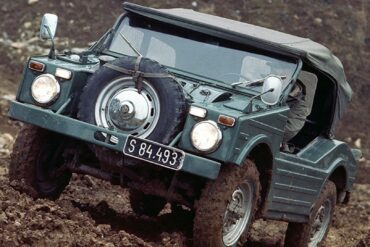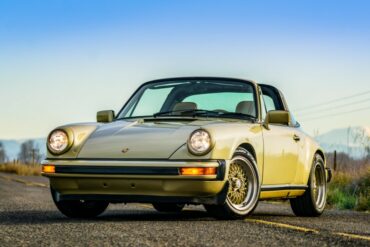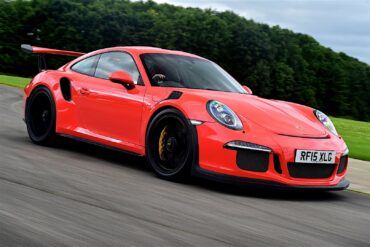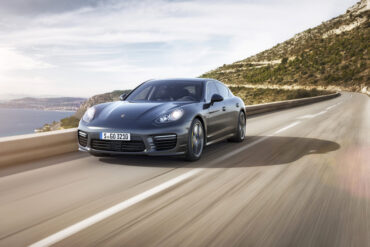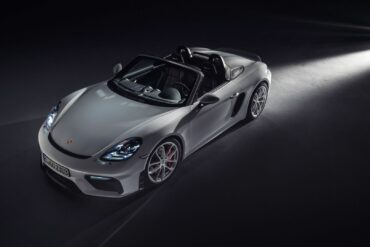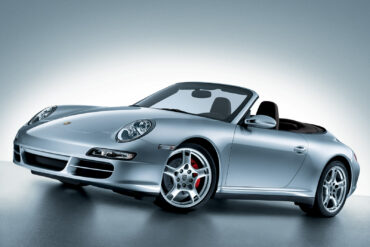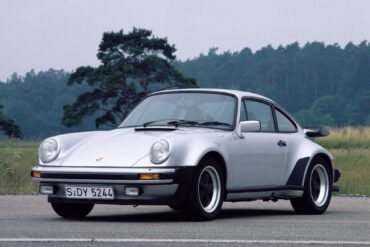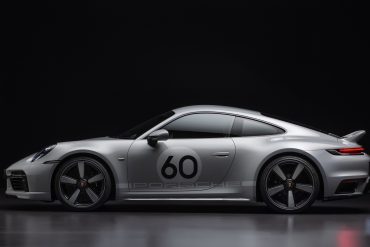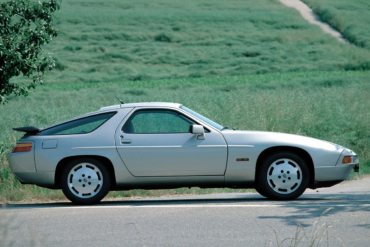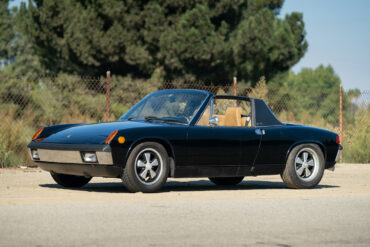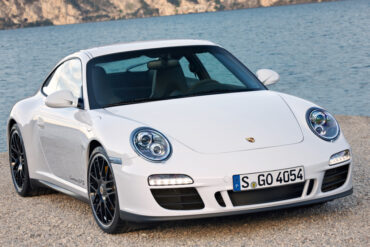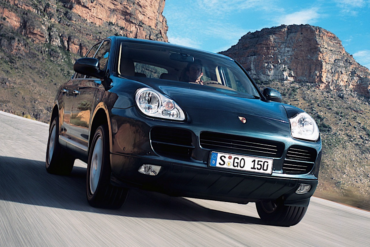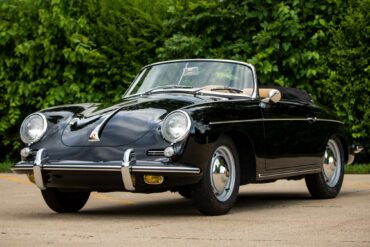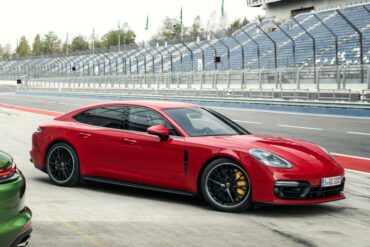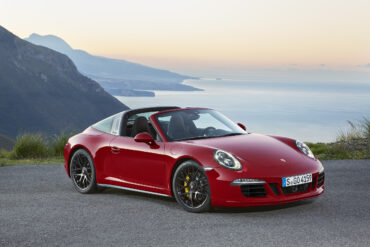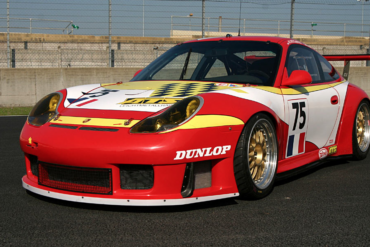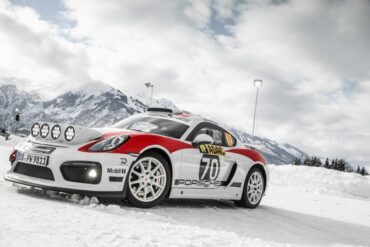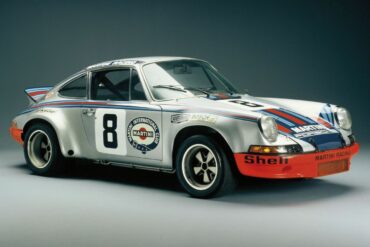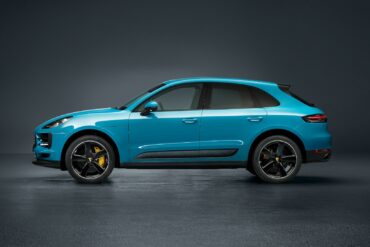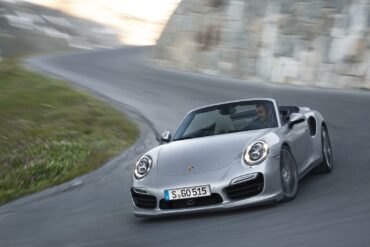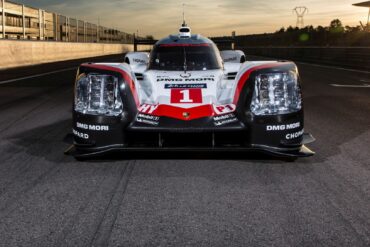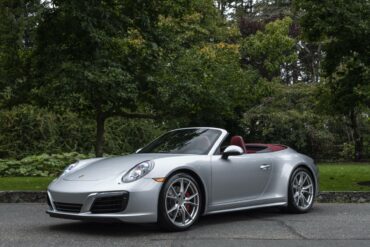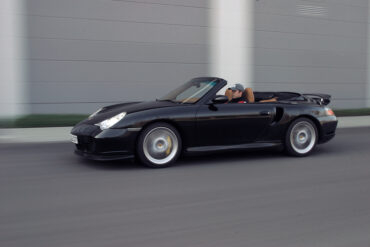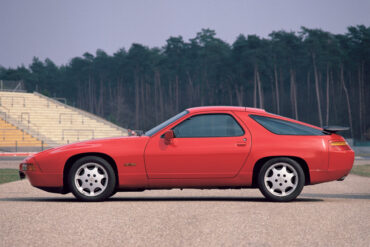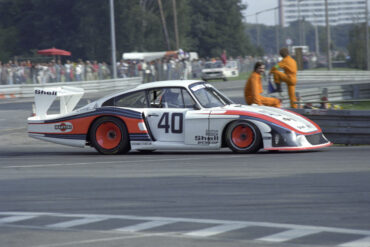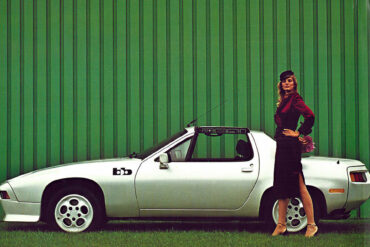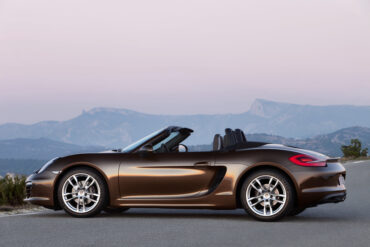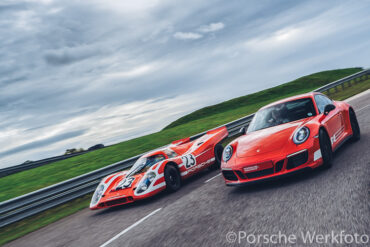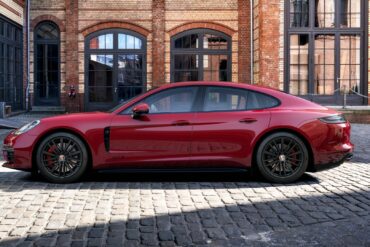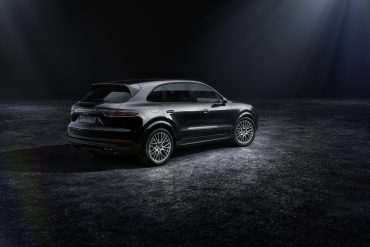Amongst Porsche 356 enthusiasts, perhaps no model is more coveted than a C-Series Carrera 2. The Carrera 2 represents the culmination of Porsche’s racing technology fitted into a road car package and the ultimate performance-first sports car in the 356 model lineup. The 1,966-cubic centimeter, mechanically complex four-cam Type 587/1 engine was the most powerful unit that Porsche had ever created for a production car, developing 130 brake horsepower at 6,200 rpm.
The GT2 was the hardcore, race-focused version of the 993 Turbo, using essentially the same 3.6 L twin-turbocharged engine, but slightly modified with increased power output. The car was made to compete in the FIA GT2 racing class. Among this already very exclusive circle of 57 cars there is an even more rare community. 20 of the 57 road-legal cars were produced in a second – and last – badge with upgraded engine power (450 PS) called GT2 “Clubsport” which make them the last Porsche models with air-cooled engines.
The story of the 718 coupé began in 1960 when a customer ordered a one-off design from Karosserie Wendler. The car was built on the Porsche 550 chassis. Front-end design came from the 718 Spyder. The roof and the rear end were unique creations by Wendler. For the Le Mans 24h race in June 1961, Porsche created two 718 RS 61 Coupés. They shared the side view silhouette of the Wendler coupé and the rear end of the 718 Spyder, but the front design was original to the car.
The Porsche 997 GT3 Cup was a series of race cars created by Porsche to enter the Fédération Internationale de l’Automobile (FIA) Group GT3 racing class. Replacing the 996 GT3 Cup, the 997 Cup's 3.6 litre engine is rated at 294 kW (400 PS; 394 hp) and was mated to a six-speed sequential transmission. In 2009, the GT3 Cup received several 997.2 updates including a new 3.8 litre engine with an output of 331 kW (450 PS; 444 hp).
The technology in racing during the mid 60s was shifting from carburetors to fuel injection. Porsche began experimenting and the Bosch injection system proved to be the most reliable. Though the performance did not increase, it did provide superior throttle response over the Weber carburetors, and it was easier to tune. To compliment the new engine, a new body was created which reduced drag levels. Porsche dubbed the resulting car, with its new engine and body work, the 906E, with the 'E' representing 'Einspritzung, or injection.
Introduced in 1994 the Porsche 911 Cabriolet was more of a Grand Tourismo vehicle than a sports car. The 911 Cabrio featured the same cues as its coupe version, but with a few differences apart from the lack of a fixed roof, of course. The 3.6-liter engine was offered in two versions, with 275 hp and 285 hp. The latter featured the VarioCam system. Both versions were mated to either a 6-speed manual or a 4-speed automatic.
The Porsche Mission R concept is intended to equal the performance of the 992-series 911 GT3 Cup. It features 900-volt fast-charging architecture, an 82.0-kWh battery pack, and modularly integrated front and rear motors with single-speed transmissions featuring straight-cut gears (typical in racing) and mechanical differential locks. The front and rear motors thus provide all-wheel drive and are identical; in "qualifying mode," they produce a total output of 1,073 horsepower, whereas "race mode" delivers 671 total horsepower. The Porsche Mission R is theoretically capable of a best 0-60-mph time of about 2.5 seconds and a top speed of 186 mph or so.
The E-Hybrid version of the current Cayenne came in 2018. Porsche used the same platform as the Bentley Bentayga and the Lamborghini Urus for the third generation of the Cayenne. This platform was designed from the beginning to accept a hybrid version. It also featured a rear-axle steering system which really helps with low speed turning and cornering at speed.
Porsche will only build 30 examples of the Clubsport 25. Mechanically, it's similar to the regular GT2 RS Clubsport. It makes the 691 horsepower from a twin-turbocharged 3.8-liter flat-six. But it gets many, many changes to the exterior and even the cooling system. As you can clearly see, the body has been lengthened, and it has also been widened. The latter is necessary to house the wide, low-offset 18-inch wheels taken from the Porsche 935, though without the aerodynamic covers.
The 992-era 911 GT3 confirms that Porsche is prepared to go to astonishing lengths to keep the hardcore faithful happy. The engine is a naturally aspirated 4.0-litre that revs to 9,000 rm and has little in common with the unit found elsewhere in the 992 range and a lot to do with the one in the GT3 Cup car. Power is up a modest 10bhp to 503 bhp, torque to 347 ft lbs. That’s more than enough. It’ll accelerate to 62mph in 3.4 seconds. It is the best sports car on the planet.
In 1974 Porsche offered a high performance fuel injected Carrera specifically for the European market. These were close to 2.7 RS specification and are often referred to as the 2.7 or Euro Carrera. In many regards, this car is similar to the 1973 2.7 RS in touring trim, with its 210bhp 911/83 engine, but the 2.7 Carrera is based on the updated G-series body and interior. Later Carreras that reach American shores used had reduced power and throttle response compared to Euro counterparts.
Using the 930 Turbo as a basis, Porsche built the 934 for Group 4 GT racing. It replaced the outgoing Carrera RSR while winning GT Championships in Europe and performing very well in America for Trans Am. Porsche built the 934 from a standard 930 bodyshell and production rear spoiler, but almost nothing else was left alone. The suspension was converted to solid mounts and nylon bushings with adjustable anti-roll bars.
The Turbo S featured the same 4.8-liter bi-turbo engine from the Turbo version, but with a new engine management system and improved turbochargers. The result was a 550 hp beast that could blast most of the supercars on the road with a 0-100 kph (0-62 mph) time of 3.8 seconds. It's all-wheel-drive and the Sport Chrono Package Turbo were standard features.
The GTS was powered by the same engine that was installed under the limited-edition Porsche 911 Sport Classic, but it was offered with more options. It wasn't just a driver's car, it was built for the passenger as well, with more options for comfort. From the outside, the Carrera GTS Cabriolet featured the same wide body as the Carrera 4 Cabriolet. At the front, the sport design apron featured a black lip-spoiler underneath. The Carrera GTS logo was painted on the doors. In the back, the car was fitted with LED taillights and four-round exhaust pipes. The 19” light-alloy wheels with central log-nut were fitted as standard.
The most significant change is the 4.0 litre six-cylinder boxer engine. This high-revving powerplant has been taken directly from the 911 GT3 Cup race car and develops 500 PS in the 718 Cayman GT4 RS Clubsport – 75 PS more than the previous GT4 Clubsport model. In addition to many upgraded details, the focus in developing the new 718 Cayman GT4 RS Clubsport was on further improving overall performance. The standard 7-speed dual-clutch transmission (PDK) fitted to the car now uses all seven forward gears, rather than six.
1970 Porsche 911 S 2.2 Coupé Along with all the C-series improvments to the 911 line, the 1970 Porsche 911...
Based as they are on the 300-hp V-6 Panamera and Panamera 4, the Platinum Edition is available with either rear- or all-wheel drive. Outside, the cars are separated from standard V-6 Panameras by platinum silver metallic trim. The shiny stuff covers the grille and rear diffuser accents, the lower half of the side mirrors, and the trunk trim. Porsche also throws in a set of 19-inch Turbo wheels and finishes the window trim in gloss black. A sport design steering wheel is standard, as well as Porsche crests on the front and rear headrests and “Platinum Edition” lettering on the doorsill trim.
After a highly modified 914 finished sixth overall at Le Mans in 1970, Ferdinand Piëch saw potential for a higher-performance, luxurious version that could be registered for highway use, and pursued the idea of what would become the Porsche 916. Planned for the 1972 model year, the Porsche 916 program was cancelled after eleven prototypes were built.
Porsche developed the S/T, of which 33 were built in 1970 and 1971, taking full advantage of new FIA rules allowing a two-inch wider track. Accordingly, wheel arches were widened to accommodate seven-inch front and nine-inch rear wheels. Weight reduction was even more radical, including thinner-gauge steel for the roof and floorpans. Heating ducts, seat slide supports, the glove-box lid, ashtray, sun visors and rear torsion-bar covers were deleted.
The second-generation Cayenne moved the game on for SUVs. It has a nicer design, more powerful engines and much nicer interiors. The base V6 Cayenne was good for 299 hp @ 6,300 rpm and 295 ft lbs of torque. Acceleration was decently brisk with 0 - 60 mph over in 7.5 seconds and top speed of 143 mph. The car was slightly longer, wider, and higher than its predecessor. All new models shared the new headlight graphics with additional lights at the inside so unmistakably Porsche.
Like the 917 LH of 1969 and 1970, the 1971 version was also made for one race only - the 24 hours of Le Mans. The 917 LH-70 had already proved that the body was excellent for Le Mans, so the aerodynamical modifications for 1971 were mild. The front was modified and the rear wheels were covered. The 917 LH-70 that scored 2nd at the 1970 Le Mans 24H (chassis 917-043) was modified for the Le Mans 1971.
These cars were designed by the factory to race in SCCA D Production Championship starting in 1979. The Porsche project number of these race cars was 933. Only 16 were built by the factory. However, if you had the right connections, you "could" buy the parts as a kit from Porsche to convert your street car into a fully race-ready 924.
Porsche refers to it as a new generation, even though the internal chassis code 997 remains unchanged. The 997.2 therefore is more of a mid-term facelift with some significant technological changes. Notably, the water-cooled flat-six engines get direct-injection technology, and a seven-speed, dual-clutch transmission replaces the previous five-speed Tiptronic automatic while the shift-it-yourself option remains a six-speed. Base Carrera coupe gets 339 bhp and 287 ft lbs and a 0.3 second faster 0 - 60 mph time of 4.5 seconds. Top speed now 179 mph. A nice update indeed.
The Porsche 356 SC, was the top-of-the-line variant in terms of performance for the 356 C Generation, sporting the highest specific output pushrod 4-cylinder engine ever available from Porsche with 107 HP. The SC engine produced 107 bhp at 5200 rpm and featured a stouter counter-weighted crankshaft, short skirt pistons, a more radical camshaft configuration, and large Solex carburetors. The SC was the natural successor of the previous generation Super 90 and represented the top-of-the-line variant for the final evolution of the Porsche 356.
In 2017, at the Geneva Motor Show, Porsche introduced the Sport Tourismo version. It is like a station wagon but has the look of a Shooting Brake. With this design, the Panamera is further away from the 911 rear design. A larger trunk means more space for luggage and golf bags. If the rear seats are folded, the total trunk space can reach 1390 liters (49 cu-ft). In 2017, Porsche installed a V8-diesel engine in the Panamera Sport Tourismo.
The basic idea: a study by one of Porsche’s design interns, the Porsche Vision 916 has compact dimensions similar to the Porsche 916, which was developed as a prototype in the early 1970s. However, this Little Rebel is driven purely electrically by four wheel hub motors. It pays homage to the car designer Ferdinand Porsche and his first Lohner-Porsche racing car with four-wheel drive from 1900.
In May 2011, Porsche unveiled the diesel version for its four-door Panamera. With the introduction of that version, it switched from a road runner to a long cruiser luxury sports-sedan. Porsche didn't want to lose that market and decided to offer a diesel version for the Panamera. Since the car was designed for long travels, a diesel engine would give it a range of over 1200 km (746 miles). After the initial shock of its regular customers, soon the orders started to pick-up.
The Panamera 4 E-Hybrid still gets the 2.9-litre V6 - from the non-hybrid variant - that's good for 325 hp and 331 lb-ft of torque. In addition to that, there's an electric motor and battery combo that supply an extra 134 hp and 295 lb-ft of torque. In all, the Panamera 4 E-Hybrid boasts a maximum combined output of 455 hp and 516 lb-ft of torque, pushing the car well into sports car territory. The car weighs almost 5,000 lbs but will still accelerate to 60 mph in an impressive 4.2 seconds with the Sport Chrono Package.
With the 1993 Carrera 2 as the starting point, Porsche had to make at least 50 roadgoing cars in order to qualify this new model for the Carrera ADAC GT Cup, which served as the basis for a motor racing variant to come, the Carrera RSR 3.8. The RSR 3.8 was nothing short of an all-out race car that could be delivered to the track in a ‘just add driver’ form. The Porsche Carrera RSR 3.8 racked up a catalogue of impressive international race results right from the outset, winning overall at the Spa 24 Hours, Suzuka 1000km, and the 24 Hours of Interlagos.
When Dr. Ferry Porsche turned 80 years old, he received a 1989 Porsche Panamericana concept car as a gift. The 1989 Porsche Panamericana concept car was a striking two-seater concept study, shown to the public for the first time at the 1989 International Motor Show in Frankfurt, Germany. The Panamericana concept stole the show, drawing surprised and admiring sighs from fans everywhere.
Porsche makes sports car history by launching its first publicly available rally car, the $223,450 911 Dakar. After extensive testing, Porsche has settled on a 3.0-liter twin-turbo six-cylinder boxer engine with 473 hp and 420 lb-ft of torque and an 8-speed PDK. True to rally form, an 80-mm suspension lifts the car, along with an optional roof rack and model-specific Pirelli Scorpion all-terrain tires.
Commemorating 25 years of Porsche sports car production, the 911S Silver Anniversary Edition is distinguished by unique Diamond Silver Metallic paint and a special black leatherette and tweed interior. The first of Porsche’s commemorative ‘celebration’ cars, this Silver Anniversary was produced in a limited run of 1,063 examples, of which approximately 500 are reported to have made their way to the United States.
In November 2007, Porsche announced a commemorative RS60 Spyder edition of the Boxster to celebrate Porsche's 1960 win in the 12 Hours of Sebring in Florida. Only 1,960 units were produced worldwide with each model bearing a numbered production badge on the dash. The RS60 Spyder came only in GT Silver Metallic exterior colour while the standard interior is Carrera Red leather, with dark gray leather as an option. The RS60 came standard with 19 inch SportDesign alloy wheels, Porsche's Active Suspension Management System, and a sports exhaust that increased the engine output to 303 PS (299 hp; 223 kW).
Searching for more muscle? The 718 Cayman S got a new 2.5L turbocharged boxer 4-cylinder. Power comes in at 345 bhp @ 6500 rpm and torque is a really strong 310 ft lbs @ 1900 rpm. For reference, the outgoing 981 Cayman S had 311 bhp and 265 ft lbs of torque. While we hate the drone of the turbo four cylinder, there is absolutely no doubt that is much more powerful and that performance numbers are much stronger. 0 – 60 mph is over in just 4.0 seconds and the quarter mile is finished in 11.9 seconds flat. Much faster than the outgoing model. But is it as engaging? No.
To comply with homologation requirements, Porsche built two street versions of their 1996 Le Mans contender. These pre-production cars are essentially the same as the race version without all the safety equipment, a higher ride height and more interior amenities. The two street versions were actually built in 1995 as 1996 model year cars. The engines were slightly detuned from 600 bhp to 544 and the gear ratios were changed.
The Panamera 4 is the first model in the Panamera lineup to feature all-wheel-drive (evidenced by the '4' badging). A few steps above sits the Panamera 4S, a sedan that offers more oomph in performance. After all, that is why Porsche added the 'S' for 'Sport' to the name. It all starts with the engine. The twin-turbocharged V6 has been upgraded and now puts out 443 hp and 405 lb-ft of torque. That's a significant increase from the 325 hp and 331 lb-ft of torque offered in the base Panamera 4.
The 1972 917/10 was similar in its design to the 908/03, but, of course, had the 12-cylinder engine instead of the 3-litre flat-8. The 917/10-72 was first seen at the Interserie Nürburgring race on April 3. It was the chassis 004 car of Leo Kinnunen and Keimola Racing Team AAW. Kinnunen scored 4th in the first race, but would win the championship by the end of the season. The second Interserie race was at Monza on May 1st and that race was won by chassis 917/10-002 and Willy Kauhsen.
Porsche launched the second generation Panamera for the 2017 model year. The updates were meaningful. The Panamera finally looked great, with a wider, lower, sleeker design that fixed all the hunchback look of the old design. Complementing the fresh threads is a completely reimagined interior, replete with touch-capacitive surfaces and massive display screens. The base Panamera got a 3.0-liter, turbo V-6 with 325 bhp and 332 ft lbs. Takes only 5.6 seconds to hit 60 mph and has a respectable 163 mph top speed.
The Porsche 911 Black Edition was a limited production Carrera built at the end of the 997 generation. Based on the 3.6-litre 997.2 Carrera coupe and Cabriolet, the car was finished in plain black as standard, with Basalt Black Metallic as an option. The words ‘Black Edition’ are printed in black on the stainless steel door sill covers, and there’s a numbered plaque on the glovebox lid. 19-inch Turbo wheels were standard. Porsche built exactly 1,911 Black Editions, of which approximately 25 percent were intended for the U.S. market.
Fresh colours and harmonious contrast packages characterise the new Porsche 718 Boxster Style Edition and 718 Cayman Style Edition sports cars. Available on the base model, this is a sweet package for the buyer looking to jazz up their base Cayman or Boxster and make them really special. Underlining Porsche’s commitment to ever more creative and vibrant bespoke finishes, the new models are characterized by special colors and matching contrasting elements. This is evident with the new color Ruby Star Neo, a modern interpretation of the color used on the 964 Carrera RS.
Porsche offered the 991 Turbo S from the start of the production of the 991 Turbo. The unique features of the Turbo S were the GT3 mirrors, slightly different front spoiler grilles and interior features. As before, the Turbo S was a heavily equipped version of the Turbo. The powerkit added 29 KW of power and the following equipment came as standard: PDCC hydraulic rollbar system, Sport Chrono (Launch control and 0.15 bar overboost functions), dynamic engine mounts, PCCB Porsche Ceramic Composite Brakes, central lock wheels, full LED dynamic headlights, 18-way Sport Plus seats with memory.
One year before Porsche started production of the legendary RS Spyder, they experimented several unique 550 Prototypes. Two of these were fitted with removable hardtops that transformed the diminutive roadster into a sleek coupe. These were quite successful on faster circuits, but the roadster was later preferred as a more saleable car. The Coupes were retained by the factory to contest the Carrera Panamericana race.
The cylinder number and position (six, horizontal) remained the same as before, but the displacement has been reduced to 3.0 liters (from 3.4 liters) and a pair of turbos has been strapped on the engine. And thanks to the force-feeding’s high potential, the same 3.0-liter unit is used for the Carrera S as well (instead of the 3.8-liter flat-six). As a result, the power figures in the Carrera 2 Cabriolet gained 20 hp and some 40 lb-ft of torque vs the prior generation. More importantly, the turbocharging makes the Carrera’s 332 foot-pounds of torque available way quicker, from just 1,700 rpm.
Also produced for the 1976 "model year", for the U.S. market, was the 912E, a 4-cylinder version of the 911 like the 912 that had last been produced in 1969. It used the I-series chassis and the 2.0 Volkswagen engine from the Porsche 914. In all, 2092 units were produced. In 1976, the Porsche 924 took this car's place for the 1977 "model year" and beyond. The power was supplied by a 4-cylinder high-performance fuel injection motor also used in the Volkswagen 411.
Unlike its Boxster brother, the S version of the mid-engined Porsche roadster offered a 3.4-liter unit from its predecessor, but with some improvements and a lower vehicle mass. It offered 311 hp and enough torque to push the car to 100 kph (62 mph) in 4.8 seconds if the car was fitted with PDK (automatic dual-clutch). The two-seat roadster featured a clean design interior, with influences from the Carrera GT super sports-car. The Boxster S was the sweeter of the two models.
As a top of the range version, the Panamera Turbo featured the same 4.8-liter V8 engine from the S-version, but with a pair of turbochargers that increased the power from 400 hp to 500 hp. It was available exclusively with a 7-speed automatic (PDK double-clutch) gearbox and all-wheel-drive. Inside, the Panamera Turbo designers took their inspiration from the Vertu luxury mobile phones, with high end appointments throughout. This is one quick and sporty sedan.
The Panamera 4S Executive is just a 'stretched-out' version of the regular Panamera sedan. The wheelbase has been lengthened by as much as 15 centimetres, an increase that mostly benefits the rear passengers. The Panamera 4S Executive sits above the Panamera 4 Executive, and they share several similarities, such as the panoramic sunroof, heated rear seats and power sunblind in the rear. Style-wise, the Panamera 4S Executive also boasts silver accents around the fenders and side skirts.
2017 Porsche Panamera The new Porsche Panamera was announced yesterday. We like it. It’s one hell of an upgrade vs the...
Porsche introduced yet another facelift for the Macan lineup for the 2022 model year. The range got more power under the hood, a refreshed design, and an improved interior. The base turbocharged 2.0-liter four-cylinder now makes 261 horsepower. It is a newly developed, turbocharged four-cylinder engine that helps hustle the base Macan from 0 - 60 mph in just 6.2 seconds and reaches a top speed of 144 mph. The redesign on the outside gives the base 2022 Macan a tighter look.
19 non 'slant nose' or Package cars were made for the USA only. Very rare. The Porsche factory had 93 Turbo chassis left. These were all transferred to Porsche Exclusiv and hand built as the very special 964 Turbo 3.6 S. They were offered with normal, or ‘Flachbau’ slant nose front ends. While the vast majority of Turbo S’ were fitted with the ‘Flachbau’ nose as a no-cost option, the Turbo S could also be had with the traditional 964 nose as well. In all, 76 Flatnose cars were made while 17 non-Flatnose (known as Package option) cars were made. These cars were also fitted with the X88 option, which increased power to 380 hp.
This came in 1973, when the fuel-injected variant of Volkswagen’s air-cooled Type 4 engine was dropped in behind the two seats, staying there through 1976, when series production ended. (The engine continued on in the 912E, which succeeded the 914 as Porsche’s entry-level car.) The short-stroke, overhead-valve powerplant displaced 2.0 liters (1971 cc) and made its 100 hp at 5000 rpm, whereas the six had made 110 hp at 5800 rpm. Yet the four matched the six’s torque output of 118 lb-ft, achieving this figure at 3500 rpm instead of 4200 rpm. And it was lighter in weight.
Similar to the 911 T, the 718 Cayman T is not the fastest, most luxurious or even the cheapest of all the 718 variants. However, the car is a unique combination of features and nuances that add up to more than the sum of its parts. The T-wins are the perfect car for somebody who knows exactly what they want, and wants nothing more than that - the purist’s car. The Cayman T is equipped with the base-model 718’s mid-mounted 2.0L flat-four turbocharged engine, which produces 296 bhp @ 6500 rpm and 280 ft lbs of torque. The Sport Chrono package is included as standard.
This extreme road sports car based on the Porsche Boxster is reminiscent of the groundbreaking Porsche 550 racing coupé that started in 1953 at the 24 Hours of Le Mans. The front and rear bonnet open in opposite directions and fuel is supplied via a central nozzle at the front. At the rear is an eight-cylinder engine with excessive sound development.
The 991 Carrera S continued the time honored Porsche 911 tradition of growing in physical size and power. Over the years the 911 has continued its evolution from a pure sports car to a luxurious super-car and the 2012 Carrera S Coupe was no exception. The seventh generation 911 launched in 2012 and it sits on a new platform, with a longer wheelbase and shorter overhangs. It also featured new headlights and taillights. Features a 3.8-liter flat-six engine mated as standard to a world's first seven-speed manual transmission.
In 1977, Porsche returned to Le Mans with the 936/77. Its body was smaller, lower, shorter and further refined aerodynamically. The engine now featured two turbochargers and delivered 20 more horsepower. At one of the most dramatic races in history, Jacky Ickx, Jürgen Barth and Hurley Haywood slayed the armada of four Renault works cars and two factory-supported “Mirage” with Renault motors. In the year 1981, the 936 celebrated a sensational comeback with another overall Le Mans victory.
The Porsche 787 is a Formula One (F1) racing car built and raced by Porsche for one year in 1961. The first car (a prototype) was created from the experimental Porsche F2 car with chassis number 718/2-05. The 1961 Porsche 787 was the first Porsche with fuel injection, 6-speed transmission and coil springs in all corners. Only two 787s, serial numbers 78701 and 78702, were ever built. Due to their lack of power and poor handling it was retired.
Porsche created the single-seat 718 RSK Mittellenker (center steering) to compete in Formula 2 racing. The body differed from the 718 2-seat sports racer only to accommodate the central driving position, with revised seat, steering, shifter and pedal placement, and the aerodynamic fairing behind the driver’s head moved from the left to the middle. Instead of having a full-width cockpit, the body sides were extended toward the center to create a space solely for the single driver, with a short, wrap-around windshield.
Thought it carries a similar design to the new 911, the Carrera 4 has its own unique features, the most obvious being an AWD system hooked up to its new turbocharged 3.0-liter flat-six engine. The C4 gets a spate of new goodies, including a unique taillight section, and an updated infotainment system that brings the sports car’s connectivity to a whole new level. Inside the new 911 Carrera 4, there are only a few changes, the most important is the new infotainment system. With 370 hp on tap from the direct-injection, twin-turbo flat-six and all-wheel drive putting all those ponies to the ground, the C4 is more than quick enough.
The covers were lifted off the 944's next-generation model in early 1989, the stunningly contemporary 944 S2. Porsche, as a company, were heading into tough times and were relying on the 944 S2 and the new 911, the 964, to make enough money just to stay afloat. Porsche upped the performance of the 944 S2 thanks to an upgraded engine, a 3.0 liter version of the DOHC double valve four cylinder that was good for solid 208 hp. The 16-valve engine was bored out from 2.5 litres to 3.0 litres.
The 2017 Panamera 4S Sport Tourismo was more like a shooting-brake than a station-wagon. More like a lowered Macan than a station-wagon Panamera. Its raked rear looked like it was there to enhance the aerodynamic rather than increase the cargo area. For the powertrain, the 4s Sport Tourismo featured a twin-turbo V6 engine mated to an 8-speed automatic transmission and an all-wheel-drive system.
Porsche designed the C88 experimental car for China. The brief was simple: the car had to be cheap, efficient, large enough to carry five people, and be built in China under a joint venture with First Automotive Works (FAW). Given the rate at which the Chinese car market was growing – not to mention the 1.2 billion people who lived there at the time – it’s no surprise that a number of firms responded with plans and prototypes. Porsche was one such company.
Porsche introduced the turbocharged version of the Type 996 for the 2001 model year (late 2000 in Europe). Like the 996 GT3, the Turbo's engine was derived from the engine used in the 911 GT1. Like its predecessor, the 993 Turbo, it featured twin-turbos but now had a power output of 420 PS (309 kW; 414 hp). As of 2002, the X50 package would increase engine output to 444 hp. The 996 Turbo was available with a 6-speed manual transmission or an automatic (Tiptronic), driving power to all four wheels. This is a great great car.
The Porsche Panamera S Hybrid marks the beginning of a new chapter of Porsche Intelligent Performance, continuing the success story of the four-door Gran Turismo. Not only is the new model the most economical Porsche of all time, it also outperforms by a mile all full hybrid production cars of its class, the luxury class, in terms of consumption and CO2 emissions. And at the same time, without any restrictions, it offers the sporty, exclusive character and custom comfort so typical of this unique Porsche Gran Turismo family.
This family car seats five, boasts generous cargo space, and will top out at an incredible 196 mph if the highway is long enough sans speed limits - think the German autobahn! For 2021, Porsche replaced the Panamera Turbo with the Turbo S variant with new design cues like the LED light strip between the taillights alongside some minor interior tweaks.
The 993 Carrera 4, sold between 1995 and 1998, uses the same powerplant as the standard 993 Carrera, but puts power down to all four wheels through a 6-speed manual transmission. A “Carrera 4” badge on the tail, along with silver-painted brake calipers and clear front and side turn signals, help distinguish the all-wheel drive C4 from the C2 sibling. Approximately 4,700 coupes and 2,500 cabriolets were made. It was replaced by the Porsche 911 Carrera 4 (996 generation) in 1999.
Key Moments from the Porsche Club of America Event Below: Tech ED Event Organizer John Mueller introduces the program and...
Model year 1994. Carrera 4 Wide-Body for the U.S. Technically there is really no difference between the Carrera 4 Wide-Body and his RoW counterpart. At the front there are the for America usual black impact absorbers beside the fog lights, the frontfenders lack the side indicators, the rear bumper is equipped with the center piece with a small plate section and in the back window of a large third brake light is integrated. Significant differences, it is generally provided in the factory standard equipment.
In 1993, Porsche Motorsports at Weissach briefly produced a turbocharged 968 Turbo S. The 968 Turbo S shared the same body and interior as the Club Sport and visually can be identified by the NACA bonnet hood scoops, adjustable rear wing, three-piece speedline wheels and deeper front spoiler. The 968 Turbo S was powered by a 3.0 L engine with a 8-valve SOHC cylinder head (from the 944 Turbo S) and 944S2 style engine block. 0 - 60 mph in 4.5 seconds and a top speed of 175 mph.
The base model Porsche 911, along with the 2.7 Liter 911S and Carrera 2.7, was introduced for the 1974 model year with many significant changes to meet legislative requirements around the world for both impact safety and emissions. It was available in Coupe and Targa variants, sporting engine Type 911/92 with K-Jetronic fuel injection, rated at 150 hp. For the 1975, the base model was discontinued in North America. ROW got Coupe and Targa variants, featuring engine Type 911/41 rated at 150 hp.
Introduced in 1969, the three-litre 908/2 is an evolution of the Porsche 908K Coupe. As the rule book for the season no longer required a minimum windscreen height nor the requirement to run a spare wheel, Porsche opted for a much lighter Spyder body; which looked like a chopped version of the short-tail Coupe used in 1968. The Spyder body was perfectly suited for high downforce races like the Nürburgring 1000 km and the Targa Florio. It was also about 100 kg lighter than the Coupe.
When the German Army tender was lost to DKW, Porsche decided to market the product for civilian use, supposedly for hunting. This provided the 597 with a nickname “Jagdwagen”. In addition to the military prototypes around 50 Jagdwagens were produced, but there was no need for such a product in large numbers and the project was terminated.
Commemorating 25 years of Porsche sports car production, the 911S Silver Anniversary Edition is distinguished by unique Diamond Silver Metallic paint and a special black leatherette and tweed interior. The first of Porsche’s commemorative ‘celebration’ cars, this Silver Anniversary was produced in a limited run of 1,063 examples, of which approximately 500 are reported to have made their way to the United States.
For those who want more extreme performance, handling and track-day bragging rights, the RS is it. It's far from practical and may be too extreme for some, especially on the street, but on track it is exceptional. Only marginally quicker than the 991 GT3 that it is based on, but it delivers that performance with a different character. Massive grip, massive downforce and more extreme than the GT3. It delivers 80 per cent of the downforce of the full-on GT3 R race car, and with a carbon fibre bonnet and wings, a magnesium roof and polycarbonate rear windows and screen, it’s also light, weighing in at just 1,420kg.
The sporty, luxurious character of the new Panamera Turbo S is evident not only in its driving performance but also in the key distinguishing features of its appearance. The Palladium, metallic exterior colour, which is available solely for the new Panamera Turbo S. Porsche added 50 additional horsepower than the Panamera Turbo. The 4.8-liter V8 turbocharged engine was mated to a standard PDK 7-speed automatic gearbox and gets PCCB (Porsche Carbon Ceramic Brakes) fitted as standard.
The 718 Boxster Spyder is everything you could possibly want in a sports car. The sublime combination of a legendary chassis and naturally aspirated 6-cylinder Porsche engine is accentuated by the emphasis that less is more when done right - and nobody does this better than Porsche’s GT division. Connections with these cars are visceral and emotional, an outcome mutually desired by both Porsche engineers and customers alike. They will never be considered tardy in the right hands. The Spyder is in my opinion, the best sports cars you can buy in this segment.
While the 997 Carrera 4S coupe sold a healthy 15,056 units between 2006 and 2008, the equally exciting Carrera 4S Cabriolet sold 12,587 units, making it a pretty popular 997 model. The reason is pretty simple. It had a gorgeous wide-body stance, all-wheel drive traction and that potent 3.8 L Flat 6 that was good for 350 bhp and 295 ft lbs of torque. The first convertible 911 that was as good a performer as it coupe siblings with the added benefit of open top driving in the summer with the comfort of being a great daily driver all year round.
Porsche made its first and most significant changes to the 930 for 1978 model year, enlarging the engine bore by 2 mm (0.08 in) to a total displacement of 3,299 cc (3.3 L; 201.3 cu in) and adding an air-to-air intercooler. The suspension benefitted from new anti-roll bars, firmer shocks and larger diameter rear torsion bars. While the increase in displacement increased power output and torque, it also increased the weight of the vehicle, which contributed to a substantial change in the handling and character of the car compared to the Earlier 3.0-Litre Models.
A total of 1,250 examples of the limited-edition model by Porsche Exclusive Manufaktur. While the original was a Carrera S, this time around, the power and handling come from a much feistier car, the Type 922 Turbo S. Returning is that amazing grey paint, that swooping ducktail spoiler, and the double-bubble roof. All-new is a mildly detuned Turbo S engine producing 543 HP and 442 lb-ft of turbocharged torque, mated to what can only be called a gift from the gods, a 7-speed manual gearbox.
The 928 S4 variant debuted in the second half of 1986 as a 1987 model, an updated version of the 5.0 L V8 for all markets producing 235 kW; 316 hp (320 PS), sporting a new single-disc clutch in manual transmission cars, larger torque converter in cars equipped with automatic transmission cars and fairly significant styling updates which gave the car a cleaner, sleeker look. S4 was much closer to being a truly world car than previous models with only small differences across markets
The standard 914 was powered by Volkswagen’s horizontal four-cylinder engine, producing a power output of 80 hp. Even with the lightweight Porsche body, acceleration suffered. The solution to this was to offer a second version: the 914/6, powered by a six-cylinder engine, total power output exceeded 100 hp. Unfortunately, this came with an extra cost– the 914/6 was nearly as expensive as a standard 911.
It's not often Porsche creates an all-new model in their 911 lineup. But the 997 Carrera GTS is just that. It's faster, more powerful and better looking than any other model in the Carrera family. However it's still a little less hardcore than the 911 GT3, and a lot cheaper than the 911 Turbo. The Porsche 911 Carrera GTS features a 3.8 litre flat-six engine which is tuned to develop 408 horsepower, that's 23 hp more than the Carrera S manages. Think of it as the perfectly optioned Carrera S for less money.
The first-generation Cayenne saw the introduction of the Cayenne S in 2002. While the base Cayenne had a 3.2-L VR6 engine, the Cayenne S got a 4.5 L V8 with more power and torque. The extremely short and compact normal-aspirated V8 produced 340 hp and 310 lb⋅ft of torque. Acceleration for the Cayenne S is strong for an SUV, with 0–60 mph taking 6.9 seconds and the top speed being 150 mph. The Cayenne S also have some visual changes to better identify it, but was otherwise standard Cayenne fair.
In September of 1959 Porsche revealed their fully updated 356 known as the 356B. This had a completely revised body that was more suitable for the American market. The 1600 Super was also known as the 1600 S and that is what we are covering on this page. The 1600 Super sat in the middle of the lineup, below the Super 90 and above the base 1600. There were several variants with the base 1600 S engine, including the Coupe, Cabriolet, Notchback Coupe and Roadster, across both the T5 generation and T6 generation.
The current 971 generation Porsche Panamera is the latest model from the German marque to receive their always much anticipated, GTS treatment. For the 2019 model year, the second-gen Panamera is now a beneficiary of the badge - which actually stands for ‘Gran Turismo Sport’ - that has come to represent the pragmatist’s choice of Porsche automobile. The Panamera GTS is also now available in a long-roof wagon body style, dubbed the Sport Turismo. The Porsche Panamera GTS Sport Turismo does not have its own unique power plant, but is the beneficiary of a detuned Panamera Turbo engine instead.
The 911 Targa 4 GTS isn't the fastest or best performing 911. It is heavier, softer and not as fast as every other GTS model. But we still love it. The Targa 4 GTS has amazing performance coupled with the sexiest body in the business. In GTS trim the Targa body looks even better. This is the car you get when you can only choose one 911 and you need it for fun weekends, daily driving and taking the wife out to a fancy restaurant. With 450 hp and 405 lb-ft from 2150 to 5000 rpm, it also has more than enough street performance than you could ever need. Buy one.
In the 2000 FIA GT Championship, the 996 GT3 R was the dominant racer in the new N-GT class and won every run. In the same year, the factory-supported Phoenix Racing won the 24-hour race at the Nürburgring. In 2001, the modified version, now called the 996 GT3 RS, was used. The vehicle was not only very successful in its class, it also achieved overall victories. Modelled on the 911 GT3 R, the GT3 RS race cars offered a number of technical improvements, which combine to ensure a racing car with optimal competitiveness. 50 racing cars were produced.
For testing purposes Porsche Motorsport built a few tarmac rally cars based on the Cayman 981 GT4 racing version. The Cayman rally car was the course car for the WRC (World Rally Championship) 2018 ADAC Rallye Deutschland. The FIA R-GT Cup was contested on tarmac rounds of the ERC and WRC, like the German WRC event. For Porsche, the entry of a concept study based on the near-production GT circuit race car was a critical test under real conditions.
Introduced in 1973, the RSR was a factory-built racing car based on the 911 chassis. The Porsche 911 Carrera RSR 2.8 was the first 911 to ever wear the RSR badge. Homologated for racing by the iconic 1973 Porsche 911 Carrera RS, the RSR’s racing career got off to the perfect start thanks to Brumos Racing’s overall triumph in the 1973 24 Hours of Daytona, while a factory car won the latest ever Targa Florio road race. For the privateer in the mid-1970s who wanted to go sports car racing this was the chosen weapon.
In July 2018, Porsche unveiled a new facelift for the Macan range in Shanghai. The production started the following month and the Europeans saw it at the Paris Motor Show in September. The 2019 Porsche Macan update includes refreshed exterior styling that includes updated front and rear bumpers, new taillamps that span the width of the liftgate, and new wheel designs. The base Macan receives a 248-hp turbocharged four-cylinder.
The 2014 Porsche 911 Turbo Cabriolet is a great companion to its coupe sibling. The Porsche 911 Turbo Cabriolet delivers the same blend of dynamism, performance and efficiency offered by the Coupe. The turbocharged 3.8-litre six-cylinder engine delivers 520 bhp and it helps drivers accelerate from zero to 60 mph in just 3.1 seconds (there goes your hair style). Compared to the 997.2 Turbo Cabriolet the new Turbo Cab delivers 30 bhp more power and are 0.2 seconds faster in terms of their standard acceleration. It is also up to 15% more efficient and more luxurious and comfortable to boot.
According to Porsche, it retained the monocoque from 2016, but 60 to 70% of the 2017 car was new, with the largest alterations being to its aerodynamic demands. This included a major redesign of the front of the 919 Hybrid with wider arches for the front wheels to make it less aerodynamically sensitive from small bits of discarded rubber from the track surface. Porsche remained in the 8 MJ (2.2 kWh) MGU category for the 2017 season. The engine was modified to be lighter and more compact, and Porsche stated that it was its most-efficient ever.
A new turbo flat-six engine is the headline news. Still super fast and surefooted all year round. The revised four-wheel-drive 911 makes the car's appeal on year-round, any-occasion usability even stronger. The 911 Carrera 4S receives a series of subtle styling updates as part of a reasonably comprehensive mid-life facelift. Included is a redesigned front bumper sporting active air ducts that open and close to channel air to the front-mounted radiators dependent on throttle load, revised headlights with altered internal graphics, larger exterior mirror housings and new door handles.
Towards the end of the 996 production run, Porsche introduced the Turbo S, boasting even more power than the standard 996 Turbo — 450 PS (331 kW) and 620 N·m (457 lb·ftf)— courtesy of the X50 package being standard. The Turbo S was limited to approximately 1,500 units worldwide, of which 598 were coupé (hardtop) and 960 were cabriolet (convertible). It was available with a 6-speed manual or an automatic (Tiptronic S) transmission, driving power to all four wheels. The basic price is EUR 122,500 for the Turbo S Coupé or EUR 131,100 for the Turbo S Convertible. Sprints from zero to 200 km/h in 13.6 seconds.
The Clubsport was up to 100 kg (220 lb) lighter and became available in 1988. This model was the toned-down version of the 1987 factory prototype which had a lightened body. In 1987, the factory made five white lightweight S4 models with a manual transmission for racecar drivers. The Special Equipment (SE) was a more complete version of the CS, in which some accessories lost in the CS are added back again.
The 935/78 was the ultimate expression of the 911 factory race car before Porsche officially withdrew from motor sport. Raced under the Group 5 silhouette series, great liberties were taken with the design and the result was nicknamed ‘Moby Dick’ for its large size and huge overhangs. The 935/78 was built under Porsche's Chief Racing by Norbert Singer for high speeds at Le Mans. Due to the advanced shape of the car 227 mph or 366 km/h was possible.
Buchmann took a Porsche 928, removed all of the "unwanted" crap behind the doors and parts of the roof and created the stunning Buchmann Targa. This is a Targa convertible with an open roof above the seats but still with the B-pillar in tact. This opening is bridged by a Targa-bar which gives the car extra stiffness to compensate for the loss of it by removing the roof. The concept was a stunner.
The third generation Boxster was a bigger car than the 987 it replaced, but it was also lighter and more powerful. The 2013 model year Boxster went through a downsize program and received a 2.7-liter boxer engine, which was 0.2-liter smaller than its predecessor. With 261 bhp @ 6700 rpm and 206 ft lbs @ 4500 rpm the base Boxster still felt underpowered to many. The base 981 Boxster got a 6-speed manual gearbox or you could opt for an optional 7-speed reworked PDK. The base car is plenty fast but if it were our money, we would opt for the more powerful Boxster S.
Porsche is the most successful marque in the 24 Hours of Le Mans and British drivers have played an important role in delivering these historical achievements, and in celebration of this success a special limited edition model – the 911 Carrera 4 GTS British Legends Edition was created. Designed by the drivers who took wins in the 24 Hours of Le Mans for the factory team – Richard Attwood (winner 1970), Derek Bell MBE (winner 1981, 1982, 1986, 1987) and Nick Tandy (winner 2015) – this model was developed by Porsche Cars GB and Porsche Exclusive Manufaktur.
The Panamera Hybrid models have their strengths, but there is still nothing quite like the visceral experience behind the wheel of a high-performance vehicle with a formidable internal combustion engine, a formidable unit like the V8 found in the Panamera GTS (short for 'Gran Turismo Sport). It plays a significant role in portraying the character of the sports sedan as a lively performance and yet, family-friendly vehicle.
The third generation of the Porsche Cayenne was unveiled in August 2017. In 2022, the Cayenne added the Platinum Edition to the SUV and coupe body styles. The Platinum Edition Cayenne applies a coat of Satin Platinum paint to a number of the vehicle's badges, as well as its fascia-mounted intake treatment and its distinct 21-inch wheels. Black exhaust tips and window trim add an extra hint of menace to the model.


